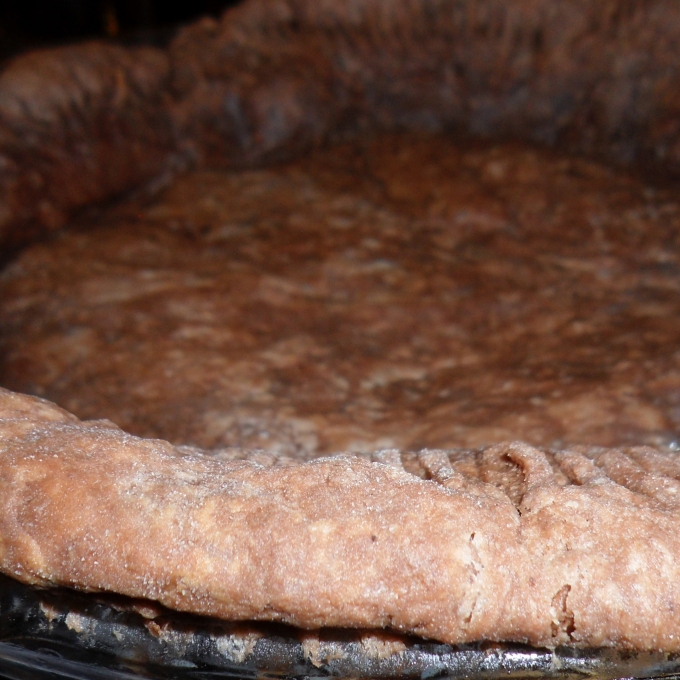
Weeks ago I googled ‘chocolate+butter+pie+crust+recipe’ to find a chocolate crust recipe to pair with a peanut butter pie but came up with very few results. Instead of going with one of the sketchy recipes I found on the internet, I decided to make up my own. Though this pie crust was completely experimental, I’m really glad I tried it.
I believe this would be a fairly good crust for the right kind of pie. Just not for the kind of pie I made it with. I would stay away from cream pies or any pie that you refrigerate and/or bake the shell before filling as I believe this pie crust tends to pick up moisture faster than other pie crusts. That being said, I think it would do well with any pie that needs to be baked. Perhaps it would work well with a pecan or custard pie.
ingredients.
- 2 T. cocoa powder
- 1 T. sugar or cinnamon sugar
- 4 oz cream cheese, cubed and chilled
- 1/2 c. butter, cubed and frozen
- 1/8 c. cream
- 1/2 tsp. salt
- 1 1/3 c. flour
directions.
- Mix flour, cocoa powder, sugar (or cinnamon sugar) and salt. With a pastry blender, two knives or even your fingers, cut butter and cream cheese into dry mixture until it has a sand-like consistency, with butter the size of peas. (I find I almost always have to use my fingers to get the sand-like consistency.
- Add half and half 1 tablespoon at a time until dough is just combined. Flatten into a disc, wrap with plastic wrap and chill for one hour.
- Preheat oven to 400 degrees.
- Roll out dough using a rolling-pin. Try to work the dough from the center on out rolling evenly on each side and flipping often. The edges of the dough will be jagged. Try to keep it as round as possible but don’t obsess over the jagged edges. Add more flour to your surface or dough as needed. The rolled out dough for your pie crust should be 11 or 12 inches in diameter or about two inches larger than the ends of the pie pan. If you have problems placing the dough in the pie pan, try rolling the dough onto the rolling-pin and then unrolling over the pie pan.
- Make sure the dough is centered in the pie pan. If the dough tears simply push the dough back together. Pat the dough into the pan starting at the edges and moving toward the center. There should be overhang. In places where there is more than 1-inch overhang, trim the pie dough with a knife. In places where there is less than an inch of overhang take some of the extra dough trimmed from the edges and pat into place.
- Fold the overhanging dough toward the center of the pan and pinch it together to make it double thick. Pinch the rim between your thumb and forefinger all the way around the edge — this is called fluting.
- Fill with pie ingredients and bake according to recipe directions.
- If baking and then filling: Bake for 10 minutes, then reduce heat to 375 degrees and bake for an extra 12 minutes. (Crust will inflate while baking.) Let cool and fill. (Again, not recommended for this type of pie but you can try. Just don’t try to say I didn’t warn you.)
It’s hard for me to rate this pie crust because I didn’t like the end result of the pie I made with it. I’m guessing that if it was used in the right pie it would deserve a rating. My pie crust got a bit soggy when I filled it and because of the sogginess factor I would have to give it a rating.









